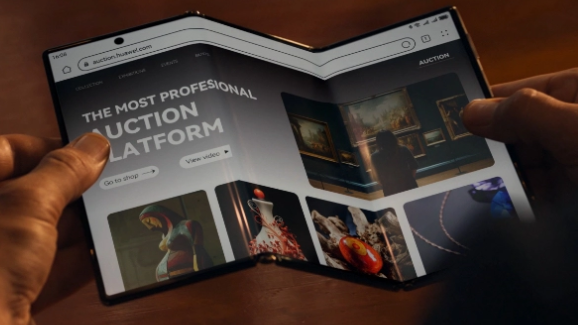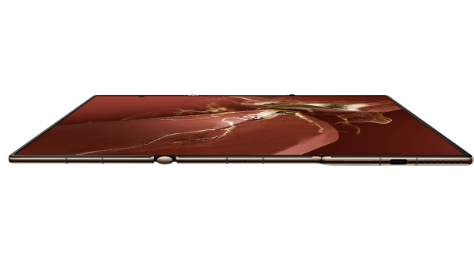Chinese tech giant Huawei unveiled Tuesday the Mate XT Ultimate, a first-ever tri-fold smartphone with a whopping price tag of no less than $2,800.
The announcement came just hours after Apple’s somewhat underwhelming reveal of the iPhone 16—a move that seemed like a deliberate jab at Western tech companies, particularly the U.S. government.
The Mate XT is impressively thin—when unfolded, it measures between 3.6 to 4.6 millimeters thick, depending on whether you measure the body or include the camera bump. For comparison, Google’s Pixel Fold, released a few weeks ago, is 5.1 millimeters thick, while Samsung’s Galaxy Fold is even bulkier at 5.6 millimeters. When folded, the Huawei device is just 12.8 millimeters thick, compared to the Galaxy Fold's 12.1 millimeters.
However, to Samsung’s credit, their device is more durable, with an IP48 water resistance rating, compared to Huawei’s IPX8. But it’s not just about thickness—the Mate XT Ultimate is also technically impressive. While the phone's processor hasn’t been explicitly listed, it's expected to be a variant of Huawei's in-house Kirin chip. The last known chip, the Kirin 9000S, featured in Huawei’s latest flagship, the Mate 60, and the MatePad Pro tablet.
Although the Kirin 9000S is built on 7-nanometer technology—older compared to the 3-nanometer processors found in the latest Apple and Qualcomm flagships—it still delivers fast and efficient performance in Huawei's devices. (And it’s not certain this is the specific chip in the Mate XT.)
The Mate XT’s standout feature is, of course, its triple-folding display. It boasts a 10.2-inch OLED screen with 2K resolution when fully unfolded, which can fold into two smaller sizes: 7.9 inches and 6.4 inches, with slightly above Full HD resolution. The ability to have a regular-sized smartphone that expands into a full or mini tablet is highly appealing, particularly for business professionals or (wealthy) students. But the device isn’t cheap—the base model will start at around $2,800, with the main difference between models being storage capacity.
This launch can be seen as a bold statement to Apple, a major Western brand still popular in China. Last quarter marked the first time Huawei reclaimed the top spot among the five largest manufacturers in China, pushing Apple down to sixth place. China is Apple’s most crucial market outside the U.S., accounting for about 20% of iPhone sales, with the device still seen as a status symbol there.
However, Chinese consumers are falling out of love with the iPhone, as it no longer offers significant innovations compared to local brands, which now feature perks like fast charging and foldable screens. Huawei’s resurgence isn’t just about national pride—it's also due to its clear technological edge over global competitors.
During the Trump administration, Huawei was blacklisted by the U.S., prohibiting American businesses and allies from trading with the company. This led to a strategic retreat from Western markets, except for some in Europe and Asia, and a sharp decline in revenue. Now, nearly five years later, Huawei is slowly making a comeback, showing steady growth in China and beyond.
Meanwhile, it continues its push for independence from Western technology, especially with the self-manufacture of chips, and has even launched products that rival Apple and Samsung in innovation, design, and camera capabilities. The Mate XT is just the latest example of this trend.



